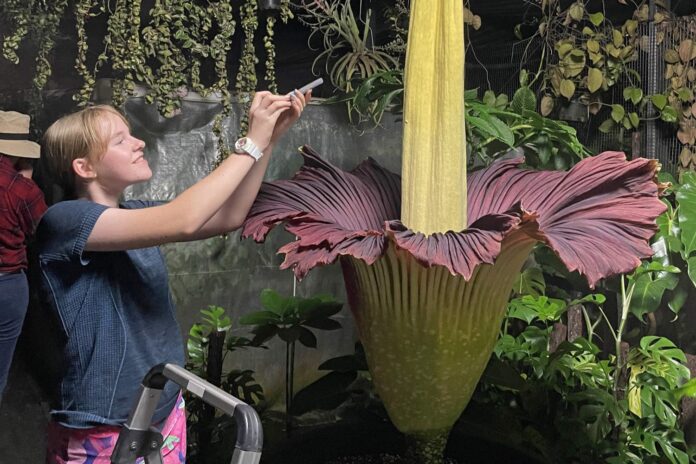It was a rare sight – and smell – to behold for a husband and wife at their nursery north of the Sunshine Coast.
An Amorphophallus titanium, otherwise known as a corpse flower, flowered for about 36 hours at Odd Spot Plants last week, when it emitted its famous but foul odour.
Lisa and Neil Paterson, who grew and cared for the plant, revelled in the occasion.
“It was much more impressive to see in person, than a video can ever share,” Lisa said.
She said people who witnessed it were “taken aback by the grandeur and imposing presence” of the plant, which was more than 2m tall.
She said the stench lived up to its reputation.
“The smell was bad but not intolerable,” she said.
“The pulses of smell were very pungent and harder to tolerate, a bit like passing roadkill in a car.”
The flower started to open in the early afternoon of Tuesday, January 7, attracting blowflies.
It was fully open by Tuesday evening.
“It had a rotten cabbage type smell, with pulses of rotten flesh smell,” Lisa said.
The flies were replaced by carrion beetles by Tuesday night.
“This is the type of beetle that does the pollinating in the wild,” she said.
“Of course, they could not pollinate ours as there are no other (corpse) flowers around here.”
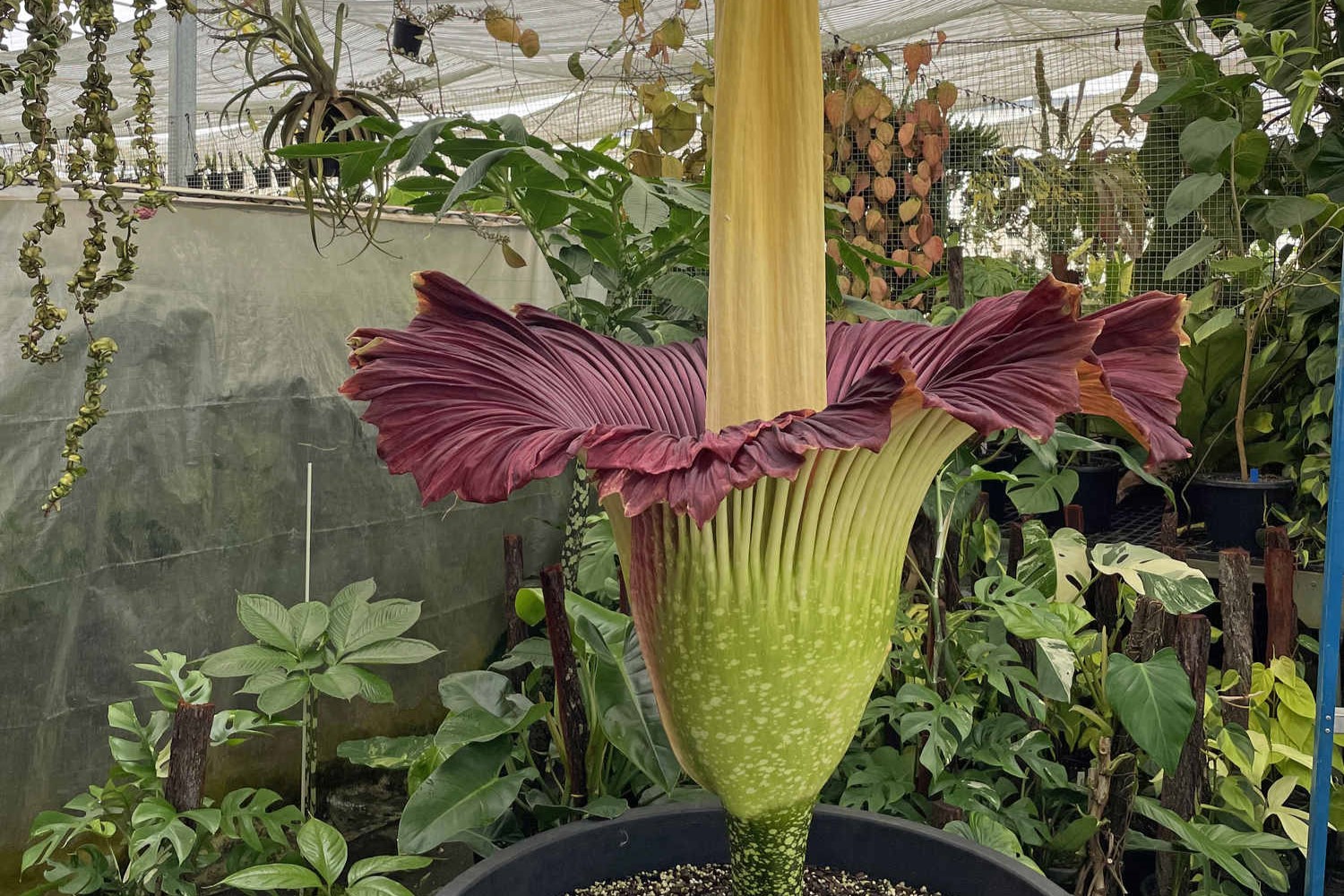
There was little change during Wednesday but the flower was closing by Thursday morning.
Lisa’s niece Samantha Hyland was on hand to witness the blooming.
“It looks so amazing … it looks like a velvet cushion or upside-down ball gown,” she said.
Do you have an opinion to share? Submit a Letter to the Editor at Sunshine Coast News via news@sunshinecoastnews.com.au. You must include your name and suburb.
Ms Paterson said the corpse flower blooming was “hugely rare”.
“There are only about 1000 of them left in the wild, in Indonesia, due to forest clearing.”
“Most in Australia are held by the capital city botanic gardens, so it was a super rare occurrence here on the Sunshine Coast.
“People will line up for hours outside the botanic gardens just to get a glimpse and a sniff.”
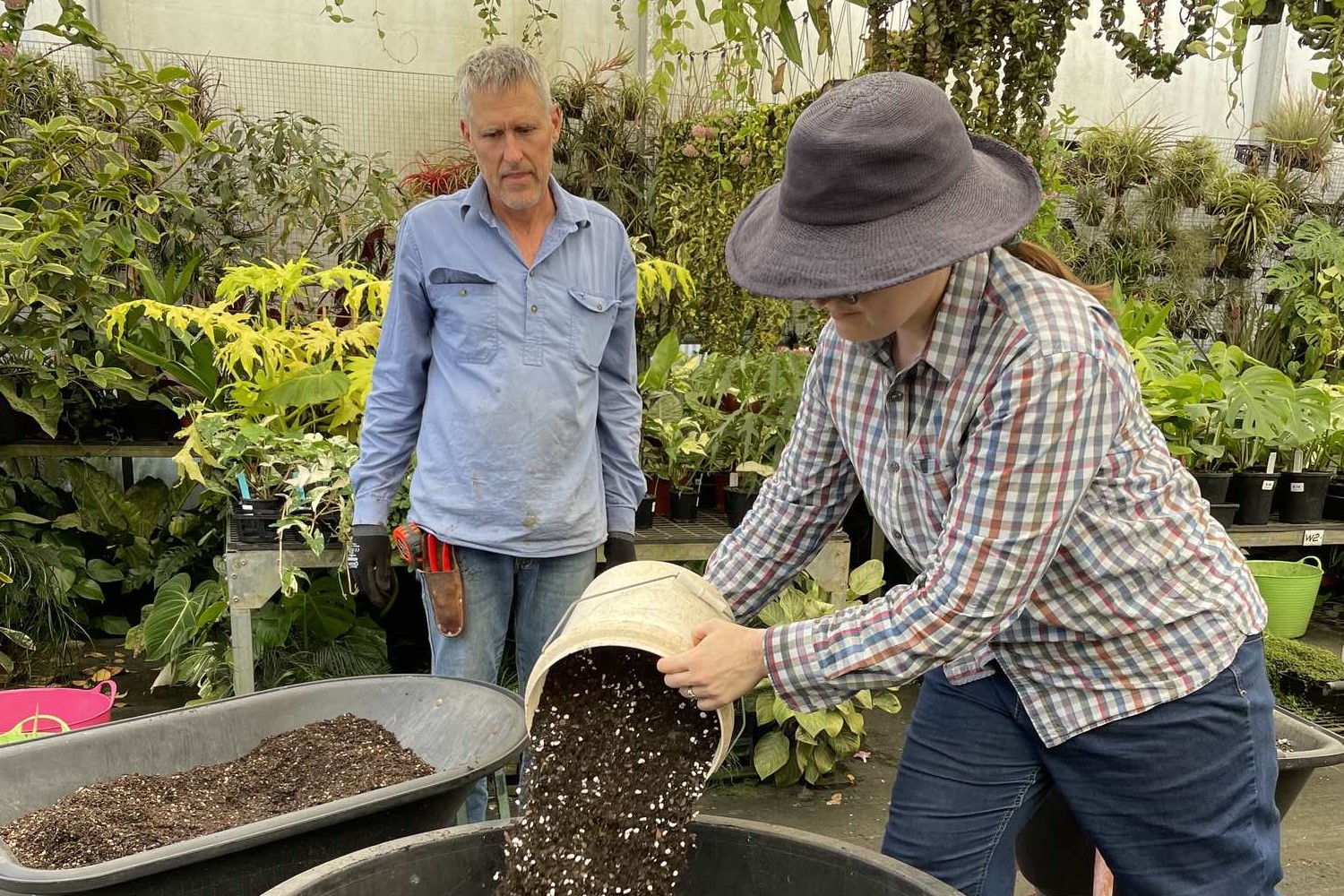
It’s believed the Patersons are just the fourth growers in Australia to flower an amorphophallus titanium outside of a botanic garden.
The Patersons own and operate a garden centre that specialises in grafted trees and “rare, unusual and quirky plants.”
Neil has a degree in horticulture and has been hybridising plants since he was a child.
When Lisa heard of someone in North Queensland with a collection including a corpse flower bulb, she enquired and bought him one.
From onion size in 2020, the bulb grew to 38.7kg by November last year, when they planted it.
It grew to 2.2m within two months and then the flower opened within five hours.
She said it was “difficult to cultivate”.
“But we are attempting to pollinate the flower and grow seed.
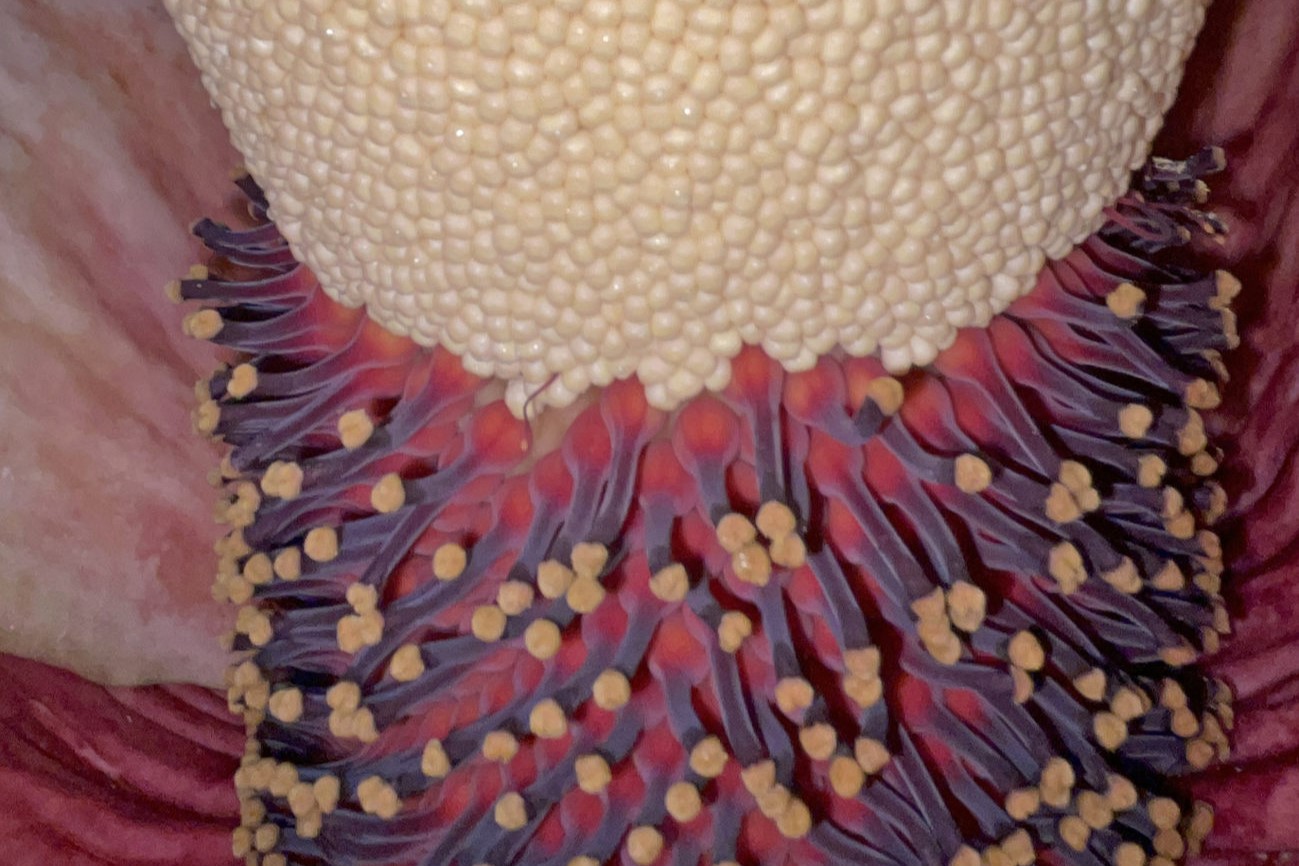
“It’s a difficult procedure. The female part of the flower is receptive first, which means you need pollen from a separate flower.
“Luckily, a friend had one flower a few months ago and we gave them instructions on how to collect it.
“The pollen needed to be kept frozen.
“(When it bloomed) we cut a hole in the side and used a paintbrush to apply pollen to the female flowers.
“At this stage the entire spadix (large centre spike) was hot to the touch.”
The flower then shed pollen, with some collected for next time.
“Hopefully, we will set seed and help keep the species alive,” Lisa said.
She said the smell and the colour of the bloom attracted the carrion beetles.
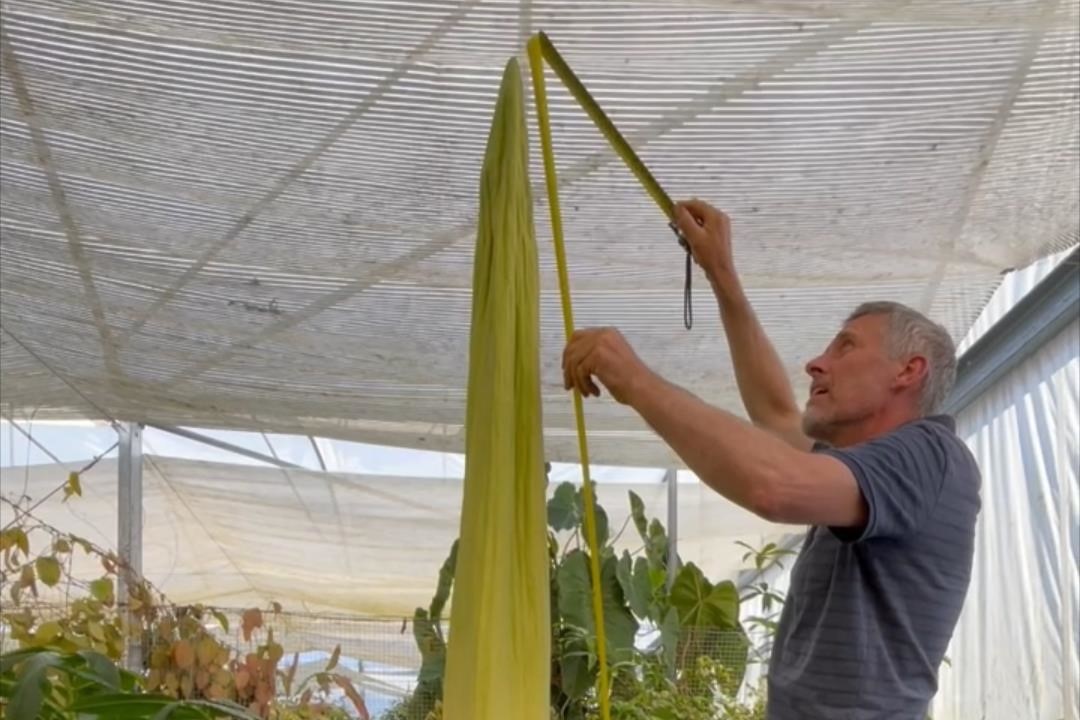
“The distinct, vibrant burgundy colour resembles rotting flesh, further enticing these beetles that feed on rotting meat.”
“The beetles crawl onto the plant’s spadix and collect pollen on their legs from the male flowers.
“Hopefully, they then visit another flower nearby and thus deposit the pollen onto its female flowers. Thus, causing pollination and seed to occur.”
But there are only a handful of corpse flowers in Australia.
“There are so few because they are difficult to propagate, large to grow and a bit specialised to grow,” Lisa said.
“The bulb needs to grow to a large size to sustain the flower.
“Each year the bulb sends up a single leaf. That leaf then photosynthesises and stores energy in the bulb.
“After several years, the bulb has enough energy for a flower.
“In the wild, it can often be 10 or more years to create a bulb big enough for a flower and often the bulb will die after it flowers, due to the energy required.”
Odd Spot Plants is located at Goomboorian but is not open to the public. It sells plants online. The nursery does have a retail at Gympie, Plant Presents, which stocks all of their plants.


